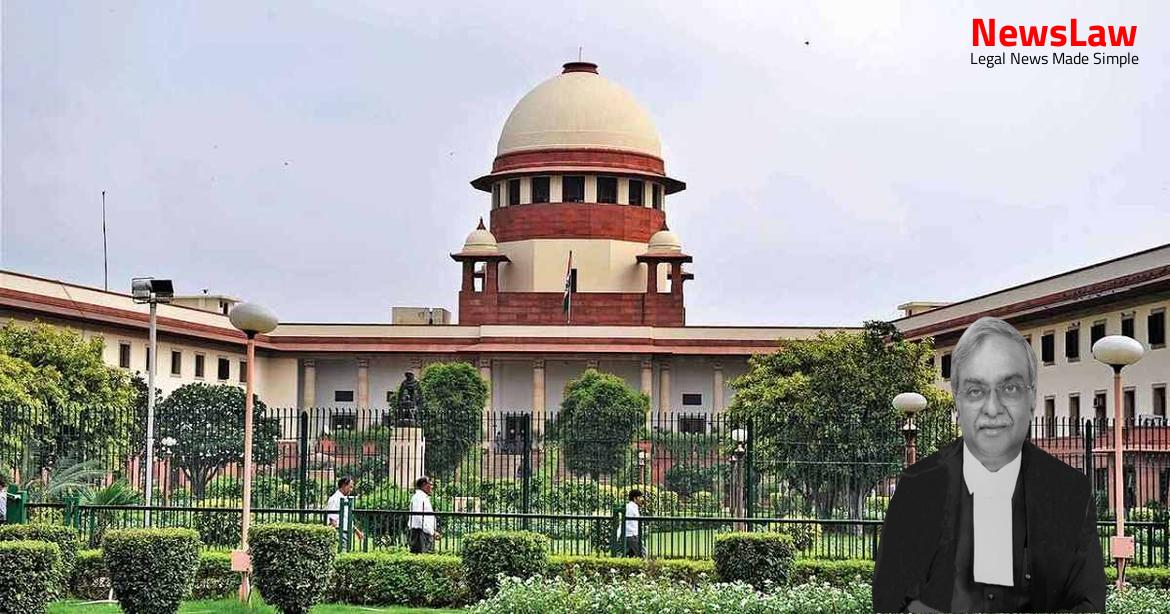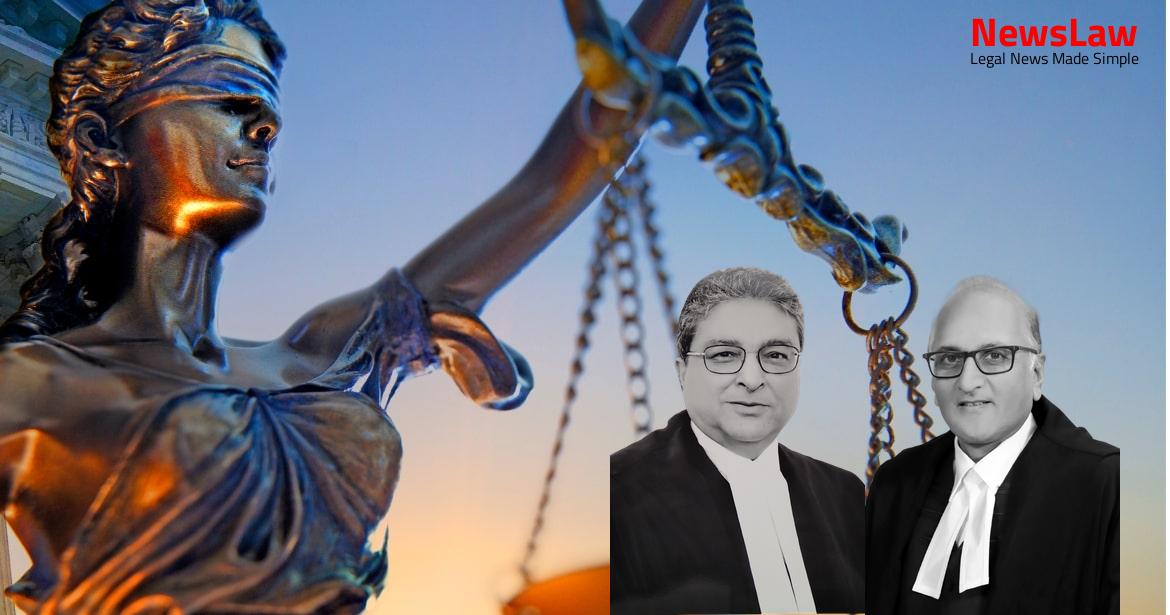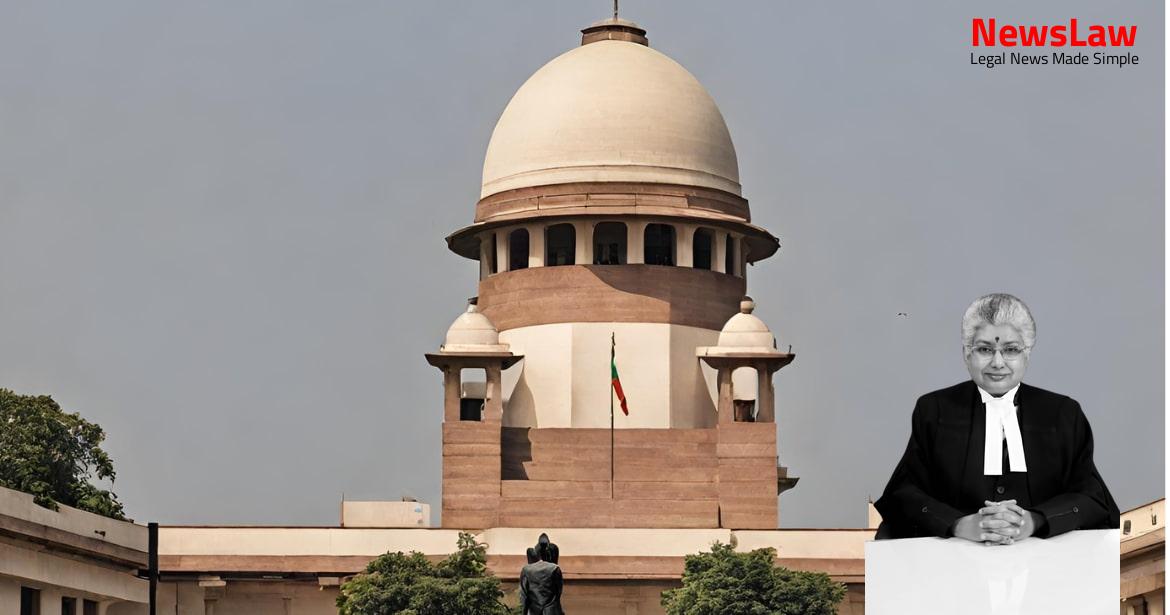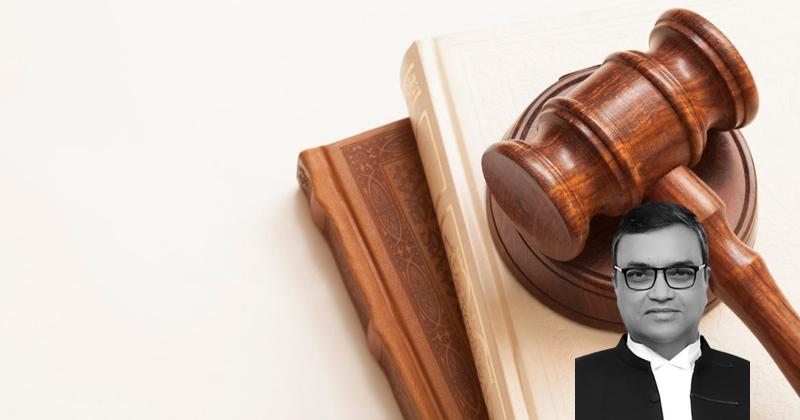The above set of appeals were referred to larger Bench of three Judges in terms of the order dated 05.03.2020 which reads as follows: “Considering the fact that the issue raised in these appeals was referred to a larger Bench of three Judges in terms of order dated 27.02.1998 in Civil Appeal No 10457/1995 and other connected cases [ reported in (1998) 9 SCC 676 ] but which appeals later on repealed by Rajasthan Act, 1951, which is on similar lines with the provision involved in the present appeals. By the impugned judgments the High Court has held that Section 4-B(3) is ultra vires the rule- making powers conferred on the State Government under the Act. The matter may, therefore, be placed before the Hon’ble Chief Justice for necessary directions.” A careful perusal of the above orders confines the question for consideration to be whether the imposition of additional special road tax levied on transport vehicle used without a valid permit is not a tax but a penalty and is ultra vires the legislative powers of the State Legislature 4 under Entries 56 and 57 of List II (the State List) of the Seventh Schedule to the Constitution.
While the matters were pending in this Court the State legislature has enacted Rajasthan Finance Act, 1977 whereby Section 4 (B) (3) has been repealed and since Rule 4 CC was made to give effect to the provisions contained in Section 4 (B) (3) the said rule also has to apply. State of Himachal Pradesh and others) is reproduced below: “(i) That the impugned Annexure-PA, PB, PC, PD, PE, dated 18 December, 1999, 23 December, 1999, 6 6 January, 2000, 12.2.2000 and 31 December, 1999 may kindly be quashed and set aside; (ii) That Section 3-A, 3-C, 4-A, 5-A along with Schedule-III under Section 3-A may be struck down being ultra vires the Constitution of India. It also struck down the decision dated 01.01.2000 based upon negotiations held on 31.12.1999 relating to special Toll Tax, as they were held to be against statutory provisions of the Act. Since Section 3-A (3) in substance imposes a fine as held above, therefore, such a nature of penalty can neither be treated as regulatory nor compensatory tax and is out of the legislature competence of the State and the subordinate legislation, that is the notifications dated 6.01.2000 and 1.04.2000 are based upon lump sum charges of the levy thus are not in consonance with the scheme of the Constitution, therefore, these are held to be ultra vires.
Also Read: https://newslaw.in/case-type/criminal/withdrawal-of-complaint-case-analysis-by-the-court/
applications in the writ petitions are also disposed of.” The State of Himachal Pradesh is in appeal against the aforesaid judgment of the High Court. vs Union of India & Others reported in (1981) 4 SCC 675 (Para 7, 8, 16 & 2018). (iii) Indian Oil Corporation vs State of Bihar reported in (2018)
1 SCC 242 (Para 25-28).” • Lump sum tax could be levied as it would be compensatory in nature. Netley ‘B’ Estate (2015) 11 SCC 462 (Para 20-22). In this connection, reliance has been placed upon the following judgments: 12 (i) Ranjit Singh vs Taxation Officer, Rampur and etc (2002 SCC Online All 75 (Para 14,15, 22 and 23) (ii) (2003) 9 SCC 92 (Para 11-13,20 and 23) (iii) State of Uttar Pradesh and Ors.
vs State of Orissa (1974) 2 SCC 777 (Para 15 & 29) (vi) Sharma Transport Rep. (2002) 2 SCC 188 (Para, 1,8 and 11)). (2019) 2 SCC 505 (Para 13).
14 • The Motor Vehicles Act, 1988 being a Central Act is relatable to Entry 35 of List III of the Seventh Schedule to the Constitution. •
The tax sought to be levied under Section 3A (3) is in the nature of penalty which cannot be done in view of the provisions contained in the 1988 Act. According to it, three lists of the Seventh Schedule would be determining the subjects over which the Parliament may have exclusive power to make laws (List I also referred to as the Union List), subjects over which the State would have exclusive power to make laws (List II also referred to as the State List) and also the subjects where the Parliament as also the Legislature of States would have power to make laws covered by List III (referred to as the Concurrent List).
(3) Subject to clauses (1) and (2), the Legislature of any State has exclusive power to make laws for such State or any part thereof with respect to any of the matters enumerated in List II in the Seventh Schedule (in this Constitution referred to as the “State List”). The same is reproduced hereunder: 18 “(1) If any provision of a law made by the Legislature of a State is repugnant to any provision of a law made by Parliament which Parliament is competent to enact, or to any provision of an existing law with respect to one of the matters enumerated in the Concurrent List, then, subject to the provisions of clause ( 2 ), the law made by Parliament, whether passed before or after the law made by the Legislature of such State, or, as the case may be, the existing law, shall prevail and the law made by the Legislature of the State shall, to the extent of the repugnancy, be void (2) Where a law made by the Legislature of a State with respect to one of the matters enumerated in the concurrent List contains any provision repugnant to the provisions of an earlier law made by Parliament or an existing law with respect to that matter, then, the law so made by the Legislature of such State shall, if it has been reserved for the consideration of the President and has received his assent, prevail in that State: Provided that nothing in this clause shall prevent Parliament from enacting at any time any law with respect to the same matter including a law adding to, Taxes on vehicles, whether mechanically propelled or not, suitable for use on roads, including tramcars subject to the provisions of entry 35 of List III.” The above subjects fall within the domain of Legislature of the State to make laws. Mechanically propelled vehicles including the principles on which taxes on such vehicles are to be levied.” The first enactment relating to motor vehicles in India was the Indian Motor Vehicles Act, 1914. Section 66 makes it mandatory for owners of motor vehicles to use such vehicles as a transport vehicle whether actually carrying passengers or goods only with a valid permit granted as provided therein.
No owner of a motor vehicle shall use or permit the use of the vehicle as a transport vehicle in any public place whether or not such vehicle is actually carrying any passengers or goods save in accordance with the conditions of a permit granted or countersigned by a Regional or State Transport Authority or any prescribed authority authorising him the use of the vehicle in that place in the manner in which the vehicle is being used: Provided that a stage carriage permit shall, subject to any conditions that may be specified in the permit, authorise the use of the vehicle as a contract carriage: Provided further that a stage carriage permit may, subject to any conditions that may be specified in the permit, authorise the use of the vehicle as a goods carriage either when carrying passengers or not: Provided also that a goods carriage permit shall, subject to any conditions that may be specified in the permit, authorise the use of the vehicle for the carriage of goods for or in connection with a trade or business carried on by him. Section 192A introduced in 1994 provides that any motor vehicle being 23 driven in contravention of the provisions of sub-section (1) of Section 66 or in contravention of any condition of permit relating to the road on which or the area in which or the purpose for which the vehicle may be used would be a punishable offence which will result into imprisonment for a term which may extend to six months and fine of Rs.10,000/- for the first offence and for subsequent offences the imprisonment could extend to one year but would not be less than six months or with fine of Rs.10,000/- or with both. Section 192A reads as follows: 24 “(1) Whoever drives a motor vehicle or causes or allows a motor vehicle to be used in contravention of the provisions of sub-section (1) of section 66 or in contravention of any condition of a permit relating to the route on which or the area in which or the purpose for which the vehicle may be used, shall be punishable for the first offence with a fine which may extend to five thousand rupees but shall not be less than two thousand rupees and for any subsequent offence with imprisonment which may extend to one year but shall not be less than three months or with fine which may extend to ten thousand rupees but shall not be less than five thousand rupees or with both: Provided that the court may for reasons to be recorded, impose a lesser punishment. The State of Himachal Pradesh, exercising the powers drawn from Entries 56 and 57 of List II of the Seventh Schedule enacted the Himachal Pradesh Motor Vehicles Taxation Act 1972. The object and reasons as spelled out for bringing out the Amending Act of 1999 was mainly to augment finances/funds for development, construction and maintenance of roads and bridges being a vital part of expanding and developing trading facilities in the State. **(2) On and from the commencement of the Himachal Pradesh Motor Vehicles Taxation (Amendment) Act,2004, there shall be levied, charged and paid to 27 the State Government, a tax on motor cycles/scooters or personal vehicles, used or kept for use in Himachal Pradesh, for a period of fifteen years from the date of issue of certificate of registration under sub- section (3) of section 41 of the Motor Vehicles Act, 1988, (59 of 1988) at the rates as may be specified by the State Government, by notification, on the basis of the price of such motor cycle/scooter or personal vehicle, subject to the maximum of ten percent of the price thereof. **(3) Notwithstanding anything contained in sub- sections (1), on and from the commencement of the Himachal Pradesh Motor Vehicles Taxation (Amendment) Act, 2004, there shall be levied, charged and paid to the State Government, a tax on motor cabs or maxi cabs which are allowed to be converted as personal motor vehicles, and on second hand personal motor * Substituted vide H.P. Levy of special road tax.- (1) In addition to the tax levied under section 3, on and from the commencement of the Himachal Pradesh Motor Vehicles Taxation (Amendment) Act, 29 1999, there shall be levied, charged and paid to the State Government, a special road tax on all transport vehicles specified in column (2) of Schedule-III, used or kept for use, in Himachal Pradesh, and, at such rates as may be specified by the State Government, by notification, but not exceeding the rates specified in column (3) of Schedule-III of this Act.
(4) Where a transport vehicle is registered in a State other than the State of Himachal Pradesh, enters and is used on any public road, or kept for use, in the State of Himachal Pradesh, the special road tax shall become chargeable, on such entry in the prescribed manner. However, the High Court upheld the validity of all other provisions and it only declared sub-section (3) of Section 3A as ultra vires. The finding recorded by the High Court is reproduced hereunder: “Further, the powers of State Legislature under the entry aforesaid being subject to Entry 35 of List III, if there is an existing law made by the Parliament laying down the principles on which taxes on mechanically propelled vehicles should be levied, then any State Legislation enacted under this entry must conform to these principles as laid down in the existing laws or the earlier law made by the Parliament.
Contra the State Legislature is not competent to levy, under the present entry, an impost which is not in substance a regulatory or compensatory tax for the transport of the vehicle along the road, but a fine, for example using a vehicle without a valid permit or for issuing it in a manner not authorized by the permit, is beyond the competence of the State Legislature, thus ultra vires. Quashing of the notifications would be dealt with at a later stage after first dealing with the issue relating to declaration of Section 3A(3) as ultra vires. Sen, J.J., observed in paragraph 7 regarding the 34 favour in presumption of constitutionality of the statute and that the burden is on the person who attacks it, to establish that there has been clear transgression of the constitutional principles. In paragraph 8, it was laid down that laws relating to economic activities should be viewed with greater latitude than laws touching civil rights such as freedom of speech, religion, etc.
When these are added to the complexity of economic regulation, the uncertainty, the liability to error, the bewildering conflict of the experts, and the number of times the judges have been overruled by events – self-limitation can be seen to be the path to judicial wisdom and institutional prestige and stability.” In case of Bhavesh D. Justice Nariman speaking for the Bench observed in paragraph 25 that when it comes to taxing statute, the law laid down by this Court is clear that it can be said to be breach only when there is perversity or gross disparity resulting in clear and hostile discrimination without any rational justification for the same. It was with this object in the background that the offending provisions were brought in by way of amendments in 1999 and 2001 which are described as special road tax.
The view expressed consistently is that it would be compensatory or regulatory where it is imposed for breach of a statutory duty. In the light of the above judgments as applicable to the provisions of the said 1997 Act, we are of the view that the High Court had erred in striking down section 10(3) as ultra vires articles 14 and 19(1)(g) of the Constitution.
Also Read: https://newslaw.in/case-type/civil/enhancement-of-maintenance-amount-a-legal-analysis/
Section 10(3) is enacted to protect public revenue. Deterrence is the main theme of object behind that imposition of penalty under section 10(3). ” From the very object and reasons of the Amending Act 1999, it is apparent that the special road tax was introduced as a compensatory measure.
Himachal Pradesh being a hill State, the importance of roads, their construction and maintenance can hardly be over emphasised as a vital trading facility. Since it is essential to finance these activities, it is considered necessary to levy road tax on transport vehicles used or kept for use on public roads in Himachal Pradesh.” What is to be seen is whether the tax imposed will have identifiable object and a nexus between the subject and the object of the levy. This Court, after considering the object behind the compensatory and regulatory levy, held that such tax fell outside Article 301 of the Constitution of India and withdrawal of the exemption granted would neither be discriminatory nor arbitrary and, accordingly, upheld the withdrawal. True again, Entry 57 of the State List is subject to Entry 35 of the Concurrent List and, as explained by us at the outset, it is therefore open to the Parliament to lay down the principles on which taxes may be levied on mechanically propelled vehicles. It may be that a State legislation, plenary or subordinate, which exempts “non-home- State tourist vehicles” from tax would be advancing the object of Section 63(7) of the Motor Vehicles Act and accelerating inter-State trade, commerce and intercourse. The special submission on behalf of the ‘Karnataka Operators’ that the withdrawal by the Karnataka Government of the exemption granted to ‘outsiders has resulted in the ‘Karnataka Operators’ having to pay tax in every State in the country and, therefore, the withdrawal has impaired the freedom under Article 301 is but the same general submission, seen through glasses of a different tint.
The appellants in the said case were companies engaged in mining operations and were seeking a declaration that rockers, dumpers and tractors were not taxable under the Bihar 45 and Orissa Motor Vehicles Taxation Act 1930 as they were not motor vehicles defined under the Act. Relevant extract is reproduced hereunder: “The Taxation Act is a regulatory measure imposing compensatory taxes for the purpose of raising revenue to meet the expenditure for making roads, maintaining them and for facilitating the movement and regulation of traffic. According to him, Entry 57 of List II being subject to the provisions of Entry 35 of List III under which the 1988 Act has been enacted, Section 192A provides for 47 penalty being imposed on vehicles being used without permit or in contravention of the provisions of sub-section (1) of Section 66 (providing for necessity for permits). This Court, in the case of Sukhpal Singh Bal (supra) has already upheld that such imposition of tax for violation of statutory provisions, is to be treated as a regulatory measure and only to work as a deterrent of the vehicle owners’ violating the law. Article 256 provides that the executive power of every State shall be so exercised as to ensure compliance with the laws made by Parliament and any existing laws which apply in that State and the executive power of the Union shall extend to the giving of such directions to a State as may appear to the Government of India to be necessary for that purpose. Power to levy taxes on vehicles, whether mechanically propelled or not vests solely in the State Legislature, though it may be open to Parliament to lay down the principles on which the taxes may be levied on mechanically propelled vehicles in the background of Entry 35 of List III.
Case Title: THE STATE OF HIMACHAL PRADESH Vs. GOEL BUS SERVICE KULLU (2023 INSC 27)
Case Number: C.A. No.-005534-005594 / 2011



